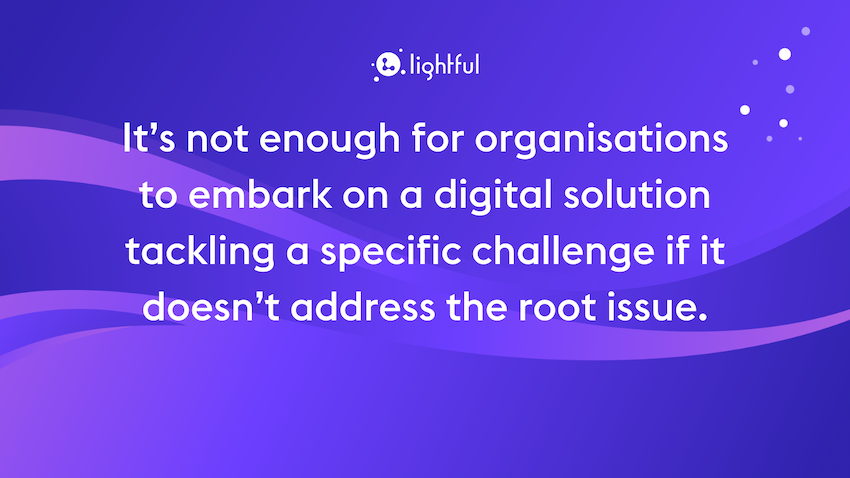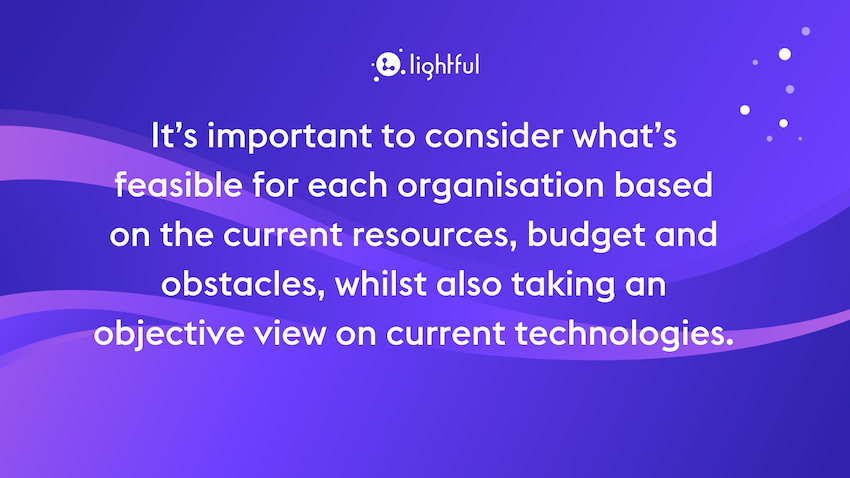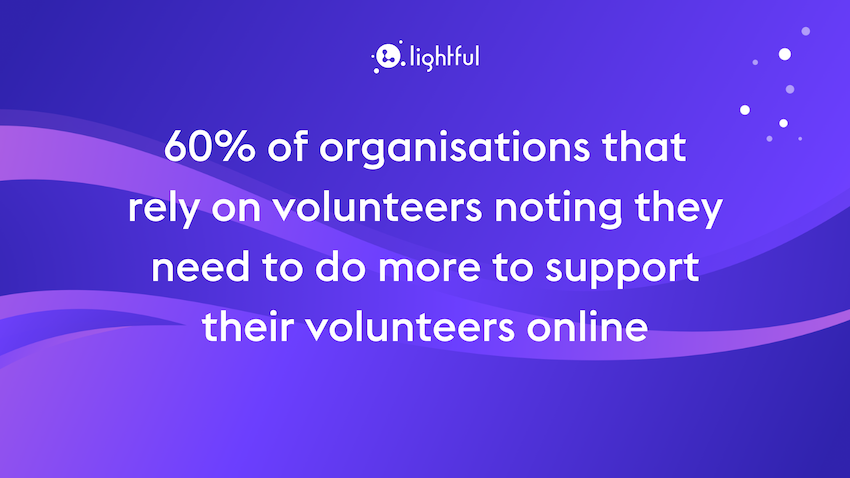How nonprofits can assess and prioritise their digital needs to be more resilient

Nonprofits embraced digital technologies during COVID-19 in order to continue delivering their services and reach their beneficiaries. However, the transition was not smooth for everyone, and there were many obstacles they had to navigate.
With support from JPMorgan Chase, we surveyed and conducted workshops with charitable organisations from across the U.K. and France delivering employability, small business development, and financial health support.
We are launching a series of blogs to capture the interesting findings from this work in more detail and share what we can learn from these experiences as funders, nonprofits, and intermediaries in the charity sector.
During our first blog, we focused on the key learnings in nonprofits’ digital delivery and the impact of COVID-19. In this second blog, we look at how nonprofits can prioritise and understand the digital issues they are facing.
COVID-19 was the impetus for many nonprofits to innovate digitally
We asked participating nonprofits to describe their use of digital services prior to COVID-19. 86% of organisations reported that a quarter or less of their services were digital before the pandemic. Nonprofits had to overcome several challenges in order to translate their in-person services to digital and continue engaging with their internal and external stakeholders.
Some of the challenges identified included:
- Digital poverty of their end-users
- Ability to engage remote beneficiaries
- Ability to share their data safely and efficiently
Along with these challenges, our respondents were also dealing with out-of-date software and a skills gap that slowed down their plans.
It’s still encouraging though to consider that 86% of organisations reported that they were ‘largely’ or ‘completely’ able to translate their face-to-face services to digital. For many, this translation of face-to-face services marked the first significant step towards their digital transformation.
As we discussed in our first blog, financial resources and staff capacity had a significant impact on how organisations were able to implement digital improvements.
How can we support organisations of different sizes and capacity to be more agile and resilient, then?
The importance of firstly understanding underlying needs
Our surveys and workshops highlighted several areas for potential improvement in digital for organisations and they included:
- Improving a website to be more user-friendly
- Storing and sharing data with internal and external stakeholders in a secure and efficient way
- Creating a knowledge base for service users and volunteers
- Digital fundraising delivering the right messages to the right audiences
- Building digital programmes and communities to increase engagement
Whilst these projects initially appear distinct, once we explored them further in intensive workshops, similarities began to emerge. Organisations were experiencing common challenges stemming from: inefficient processes, inaccurate data and/or lower engagement levels from stakeholders. What we realised is that, it’s not enough for organisations to embark on a digital solution tackling a specific challenge if it doesn’t address the root issue. There is even a risk that doing so could further embed and exacerbate inefficient processes.

It is therefore critical to start any digital journey by taking a more open-ended approach to unpicking the underlying barriers an organisation faces to meeting its objectives. Importantly at this stage, this ‘needs identification’ process should seek to avoid bias or pre-conceptions about what solution is needed. We have found that the most sustainable digital journeys start with a solution-agnostic mindset, focused on service users’ (or any other stakeholders’) requirements and addressing these in sustainable ways.
This process involves developing a holistic understanding of the entire user journey: whether that is the process for a new volunteer to sign-up, for a service-user to access support, or for a program manager to pull relevant data to understand if their service is having the desired impact. Needs identification requires a significant investment of time, from different parties. By seeking a diverse set of views and voices, organisations can gain insight into the pain points and magic moments in current processes, internal and external. It is only with a detailed view of user journeys that the most pressing challenges and crunch points can be identified and prioritized between.
Needs identification is a resource-intensive undertaking, and especially so for complex and multifaceted projects. Prior to each workshop, each nonprofit completed a questionnaire that covered project vision, objectives, pain points, technology and stakeholders. We then held two-hour workshops defining success, mapping pain points and planning for success. Our approach in delivering workshops utilised the following key principles to best elicit needs from participants making efficient use of their time:
- Don’t rely on people telling you what they want - instead, invest the time in asking the right questions to solve real, rather than perceived or surface level challenges. Open questions that consider what are the activities and tools involved in each task, and what are the key challenges within it. These questions identify implicit knowledge and behaviours, and enable them to be discussed and agreed upon.
- Critically review all current systems and processes - inefficient processes can sometimes become so embedded that they stop being noticed. It is important to take a step back and consider digitalisation both in the context of new developments, but also existing workflows.
- Invest the time - identifying needs requires key stakeholders, i.e. all those who are involved in or impacted by processes, to consider all areas including data and design, instead of a single workshop with a handful of stakeholders. A comprehensive process facilitates the collection of multiple data points that can be reviewed and categorised to ensure things haven’t been missed but also to draw out key themes and ways forward.
How to begin tackling a long list of needs
During our workshops, we helped participants untangle these needs and create a prioritised list that can be formulated into a roadmap. In order to complete this process to identify what the highest priority items are to be addressed, we recommend considering the following points:
1. Complete a cost-benefit analysis - Using staff, volunteer, and end user insights to quantify inefficiencies can better inform which changes can make the greatest impact. For example, a relatively simple solution or automation could eliminate manual data transfers between systems which currently take days of staff time. Staff time can then be reassigned to higher impact generating activities. This enables a more objective cost / benefit analysis to be undertaken on progressing certain items over others.
2. Understand project dependencies - This helps deliver the core functionality that doesn’t make future innovation more expensive.One of the biggest mistakes participating nonprofits made was going straight from a partial documentation of needs to procurement of technology. Although this seems like simply picking low-hanging fruit, it becomes clear in the medium to long-term that these short-term solutions are either not actually cost-effective, or are, in fact, incapable of addressing other core priorities, or incorporating related digital experiences and journeys.
3. Embrace collaborative decision making - Prioritisation requires balancing the needs of multiple stakeholders and there is often no single correct way to approach things. However, collaborative working processes and workshops improve the understanding of different perspectives. This in turn enables nonprofits to make decisions that can benefit the lives of most people.

Across this, investing in skills and knowledge for the team to support this journey is key. It’s important to consider what’s feasible for each organisation based on the current resources, budget and obstacles, whilst also taking an objective view on current technologies.
Every participating organisation may be at a different stage on their digital journey, but all of them should start with an assessment to understand where they are and what success looks like for them. No matter how an organisation is planning to use digital, it’s a process that can be hugely beneficial to inform what needs to happen next.
Recognising the wider context within the organisation
Alongside needs and prioritisation, it is also important to recognise the wider context in which any potential digital solution would sit. One participating organisation intended to approach their volunteers as part of its fundraising efforts. They invested in a set of new donation pages, but soon found that they couldn't join up their volunteer data to their digital fundraising efforts and didn't have the internal skills or advertising budget to leverage their new donation pages as part of a wider digital fundraising strategy. Through the process of taking a step back, issues can then be considered in a joined-up way to provide a shared vision of outcomes that work across internal teams.
The development of solutions needs to be conducted in parallel with investments in each nonprofit’s team and their skills. Through our survey, several key areas emerged as digital skills that nonprofits could develop in order to support these changes and improve organisational resilience:
- Better digital marketing/social media - 63% of organisations felt they needed to improve their social media performance and 70% felt they needed to improve their digital marketing as a whole.
- Upskilling staff to run services online - Respondents noted that staff have been able to respond to new ways of working, but have struggled to design and implement new features for digital service delivery. 63% of respondents struggled at the first touchpoint of digital service delivery - capturing data from online sources (e.g. forms) and integrating with their Customer Relationship Management (CRM).
- Digital service design - More than 50% of organisations struggled to make changes to their service offerings that would enable users to access support online.
- Volunteer experiences - As volunteers are needed more than ever, organisations have struggled to engage volunteers in new ways of working, with more than 60% of organisations that rely on volunteers noting they need to do more to support their volunteers online.

What’s next
The best way for nonprofits to adopt digital is to start by understanding where they are and what they want to change.
An improved understanding of digital, along with their own capabilities, will allow nonprofits to work on a plan that will future-proof the investment they make in implementing and rolling out new technologies and make them more resilient.
Organisations should evaluate their available technology stack and what they need to improve to ensure that they’re able to keep up with any unexpected changes.
In the next blog, we’ll look in more detail at how nonprofits can understand what technology works for them, and how they can create a plan for the implementation of possible solutions.
Latest articles

In a world of growing uncertainty, small and local non-profit organisations often find themselves with competing priorities and struggle to plan how to allocate their available resources. Despite the increasing demand for their vital work, they are not always able to allocate the funds they receive to strategic planning and future growth.

As the world becomes more digitally-focused, it’s essential for nonprofits to have a digital presence. With more and more options for online engagement, we know that this can be challenging for nonprofits to tackle. But, we also know that it is a huge opportunity to increase audience engagement, awareness and fundraising. To help nonprofits navigate this, we’re going to explore the “whys” and “hows” of creating a nonprofit digital strategy. We’re even providing a free digital strategy canvas to help nonprofits improve their online presence in just a few steps.
Related posts

As the world becomes more digitally-focused, it’s essential for nonprofits to have a digital presence. With more and more options for online engagement, we know that this can be challenging for nonprofits to tackle. But, we also know that it is a huge opportunity to increase audience engagement, awareness and fundraising. To help nonprofits navigate this, we’re going to explore the “whys” and “hows” of creating a nonprofit digital strategy. We’re even providing a free digital strategy canvas to help nonprofits improve their online presence in just a few steps.

We’ve been hearing a lot about the metaverse lately and nonprofits that we work with are wondering what the emerging technology means to them. It’s difficult to get your head around something so new and different so we wanted to try to dig into it to understand more.
See who we help
Contact us
Want to learn more?
Email Jonathan and start a conversation





